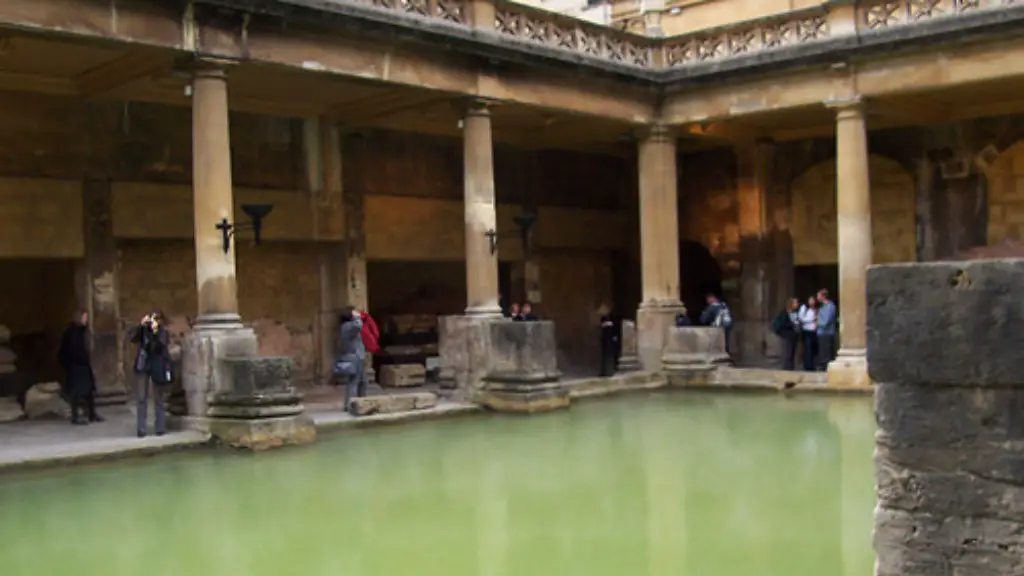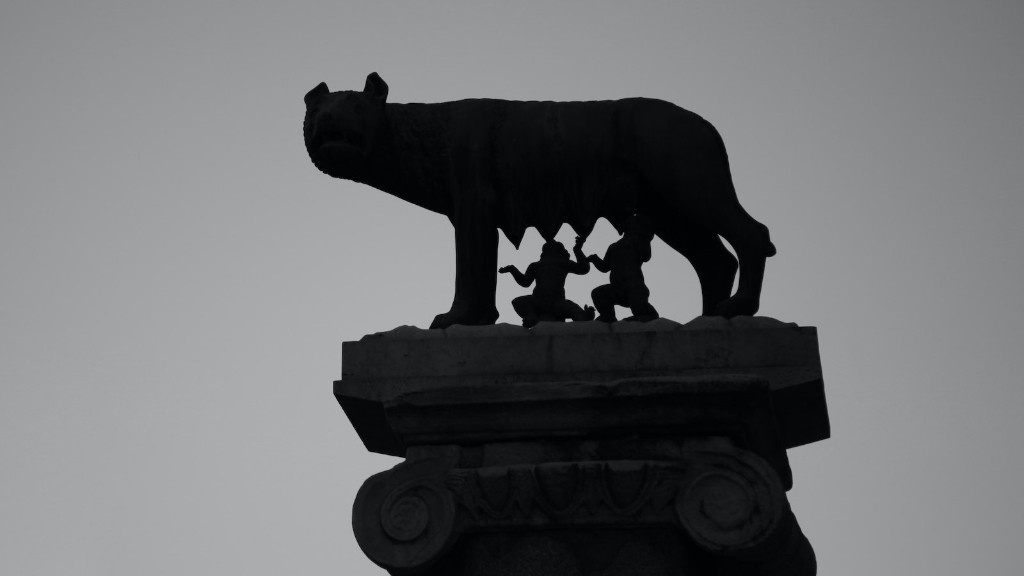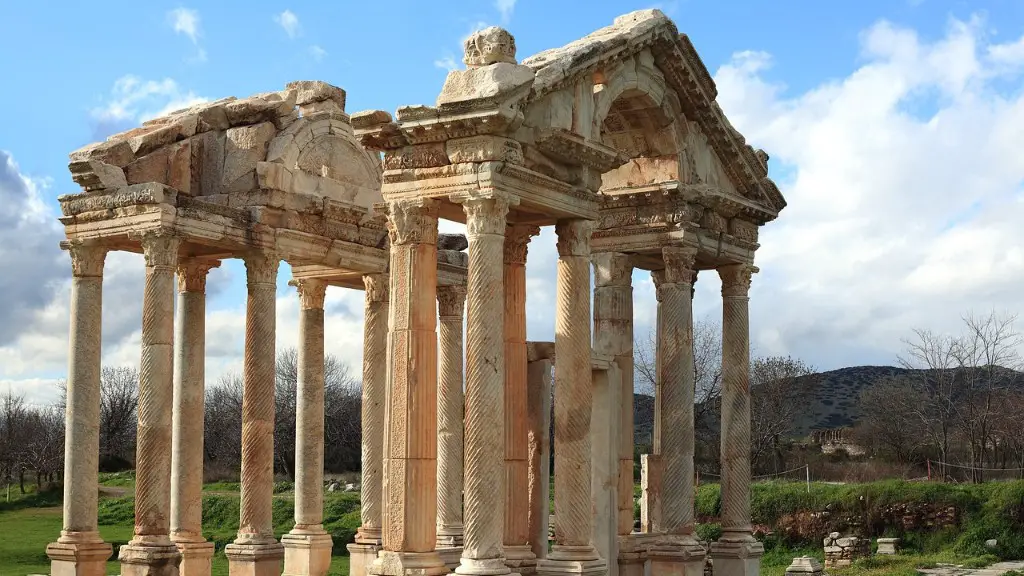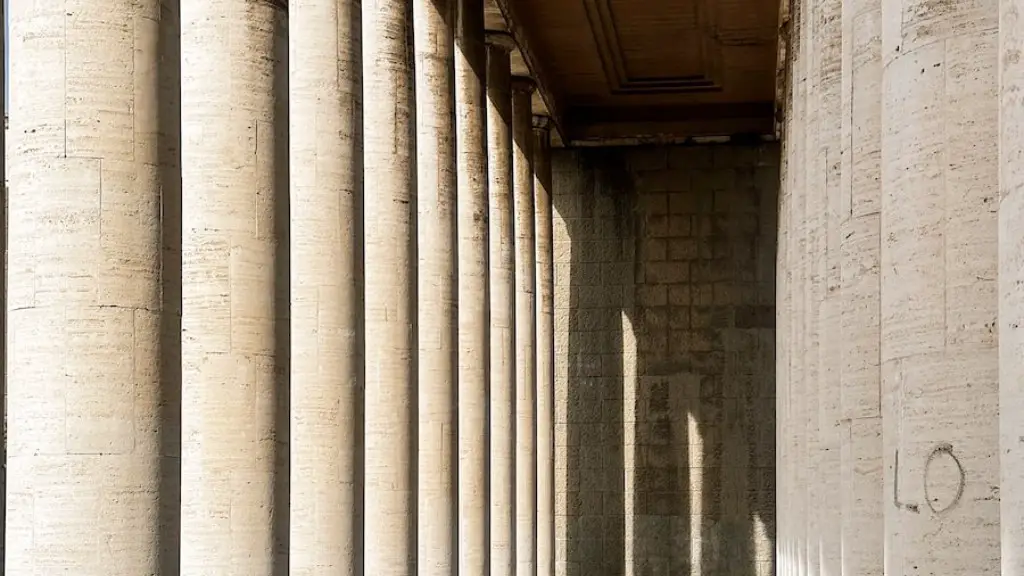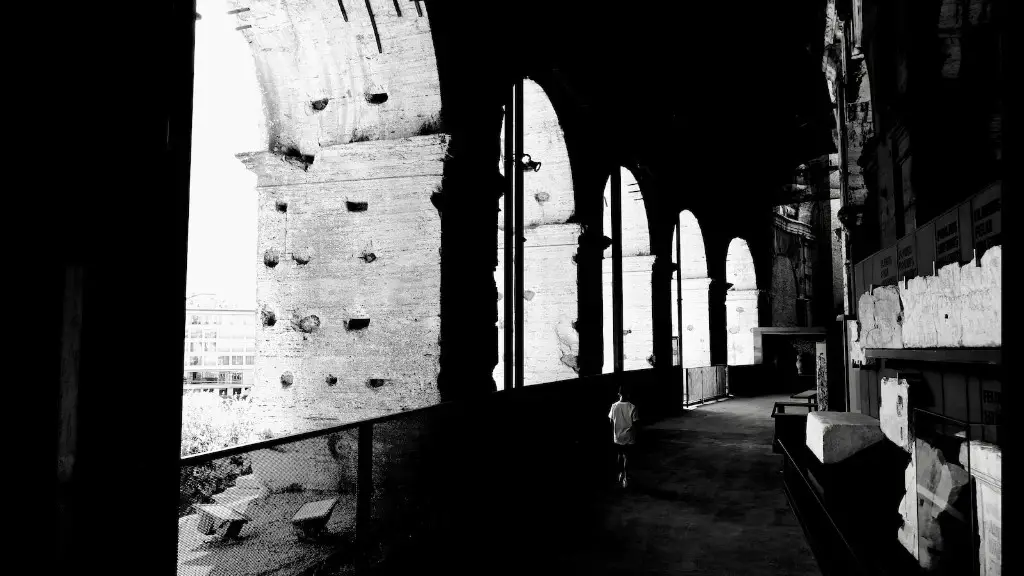Ancient Rome had an advanced system of roadways that was unmatched for centuries. The Roman roads were designed for military purposes, but soon became vital to trade and commerce. The engineering and construction of the roads was a massive undertaking, and the legacy of the Roman roads can still be seen today.
Ancient Rome designed and constructed its roads by using stone pavers. The stone pavers were laid in a herringbone pattern, with the largest pavers in the center and smaller pavers on the sides. This allowed the roads to be very strong and durable.
What did ancient Romans use to make roads?
Most Roman roads were built using a layered approach, with a foundation of earth, a layer of rough gravel and crushed bricks, and a top layer of finer gravel. The most prestigious roads had a top surface of dressed stone blocks, cobbles or slabs of volcanic tuff, limestone, or basalt. This gave the roads a much smoother surface that was easier to travel on.
The Roman roads were some of the most impressive feats of engineering in the ancient world. Many of these roads are still in use today, testament to the skill of the Roman engineers. The roads were constructed with a combination of dirt, gravel and bricks made from granite or hardened volcanic lava. The Roman engineers adhered to strict standards when designing their highways, creating arrow-straight roads that curved to allow for water drainage.
How to build a Roman style road
Building a road in ancient Rome generally followed the same process. First, a ditch was dug. This was then filled with sand, followed by a layer of gravel. On top of the gravel, a layer of concrete was added. This was made from volcanic ash. Finally, the road was finished with a layer of smooth stones.
The Roman road system was an outstanding transportation network of the ancient Mediterranean world, extending from Britain to the Tigris-Euphrates river system and from the Danube River to Spain and northern Africa. In all, the Romans built 50,000 miles (80,000 km) of hard-surfaced highway, primarily for military reasons. The Roman road system was an efficient way to move troops and supplies around the vast Roman Empire.
How did Romans build roads so straight?
The groma allowed surveyors to take very accurate measurements of angles, which they could then use to map out the route of a road. The Romans were able to build an extensive network of roads using this method, which helped them to conquer and control a large area of land.
The main objective of this road alignment was to ensure that the roads were built along high points, ridges and watersheds, so that they would be less likely to be washed away by floods or landslides. This also helped to reduce the cost of maintenance as these areas were more stable. Wherever possible, rivers were crossed at fords, which were then mainly paved, to make them easier to use and reduce the risk of accidents.
How do Roman roads last so long?
The Roman technique for building roads was very effective in creating a sturdy surface. The three-layer system ensured that the roads would be strong and durable. The first layer consisted of mud, stones, rough gravel, and crushed bricks on a level surface. The second layer was made up of sand or fine gravel. The last layer was made of gravel or concrete. This system created a strong and reliable surface for roadways.
Roman roads were built to last and consisted of three layers. The bottom layer was a foundation of stone, the middle layer was softer material like sand or gravel, and the surface was a gravel or paving stone. This made the roads durable and able to withstand the heavy traffic of Roman life.
What are the three construction techniques that the Romans developed
The Roman building methods of the arch and the vault were a direct departure from the post-and-lintel methods favored by the ancient Greeks. The arch and the vault were much more structurally sound and allowed for the construction of much larger and more impressive buildings. The most famous examples of Roman architecture using the arch and the vault are the Colosseum and the Pantheon.
Roman roads were built with four layers. The first layer was the statumen, a layer of large stones. The second layer was the rudus, a layer of gravel in concrete. The third layer was the nucleus, a layer of sand and smaller gravel in concrete. The fourth and final layer was the pavimentum, a layer of large stones.
What is the first step in building a Roman road?
The method at the base of the construction of roads in the Roman Empire was rather complex. The first step was to define the edges and dig a deep trench. Inside this trench were placed four layers of various materials. The technical term “via strata” is the origin of the word “road” or “street” in Italian: “strada”.
Roman roads were a quick and safe way to travel large distances. The surface of the road was shaped into a camber so that rain water would run off into the ditches. Roman roads were used by the Roman soldiers and also by merchants to carry goods all over the Roman Empire.
Who taught the Romans to build roads
The Roman military was responsible for building all the roads of the Roman Empire. This was because there was no one else who could do it. The Roman military employed specialists within the units to actually do the work.
The expected rate of construction for a road was 1 1/2 yards (135m) per man per day. In some cases, 2 yards per man per day was achieved.
Why don t we build roads like the Romans?
The Roman method of road building is very labor intensive. In order to build a Roman road, you need a lot of workers. The Roman method of road building is very time consuming and expensive.
Roman roads were built to last. They were constructed from multiple layers of stone and cement. The roads were also maintained.
Did Roman roads have curves
The Romans are known for their engineering feats, including their straight roads. While it may have been easier to build roads with bends, the Romans knew that straight roads were more efficient. This efficiency allowed for quicker travel and transportation of goods. The straight roads also allowed for better military movements and communications.
Roman roads were built for many purposes, including to facilitate trade and travel. The surface of a Roman road was often cambered, or sloped, so that rainwater would run off into the ditches. This design made Roman roads quick and safe to travel, even over long distances. The Roman soldiers were not the only people to use them; civilians also made use of the roads for trade and other activities.
Conclusion
The Roman Republic began constructing roads in the early 4th century BC. The Roman road system was the largest and most advanced network of roads in the ancient world. The primary purpose of the Roman road system was to move troops and supplies between Roman cities and military bases. The Roman roads were also used for trade and to transport goods and commodities between cities. The Roman road system was so effective that it was used for centuries after the fall of the Roman Empire.
The roads of ancient Rome were designed for both function and aesthetic. The roads were designed to be able to accommodate a large amount of traffic and to be easily navigable. The roads were also designed to be aesthetically pleasing, with many of the roads lined with trees and shrubs.

